I can now happily report that La Palma is, in fact, outrageously good for hiking. And thanks to its historic towns, verdurous forests, and authentic atmosphere, it is also possibly my favourite Canarian island.
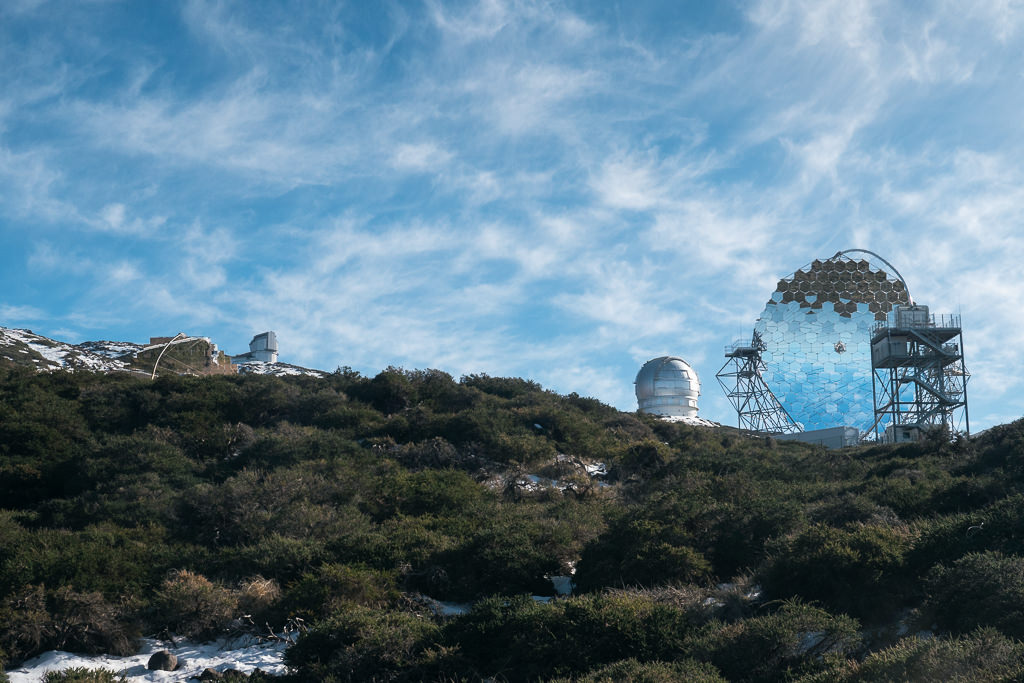
I didn’t know until the day I touched down that La Palma is also a world-renowned starlight reserve. In fact, after Hawaii, it’s one of the world’s best places to see the stars, attracting scientists from all corners of the world to study the universe from La Palma. Arriving at night and seeing the sky utterly pixelated with stars made for an incredible welcome.
Sadly, the following day on my visit the island was hit by a calima, a Saharan dust haze created by easterly winds from Africa. Suddenly, the skies turned red, making me feel as though I had been transported to the opening scenes of Blade Runner 2049. A thick haze shrouded every landscape, tricking my mind into thinking it should surely be cold, yet the warm air clung to my skin as I could barely distinguish what was on the horizon.
This made for a surreal but slightly disappointing start to my stay. Luckily, it only took a few days for the calima to subside and a thunderstorm to wash away the remaining Saharan dust.
I could finally explore the island…
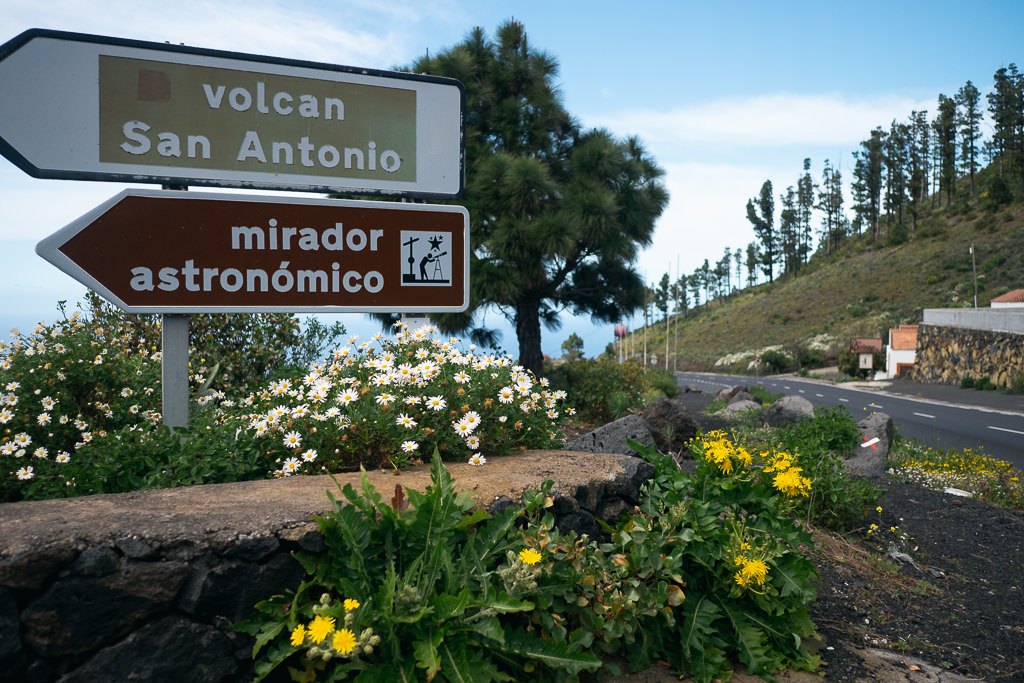
Plan your stay on La Palma
Exploring La Palma
Any trip to La Palma is sure to begin in the capital, Santa Cruz de La Palma. Its wonderful historical core makes for a perfect welcome to this island with the moniker ‘La Isla Bonita’, or the beautiful island.
The many colonial-era buildings along the sandy beachfront, all with flower-filled wooden balconies, instantly added credibility to La Isla Bonita’s name. The capital feels more like a town than a city and is a great place to start on La Palma.
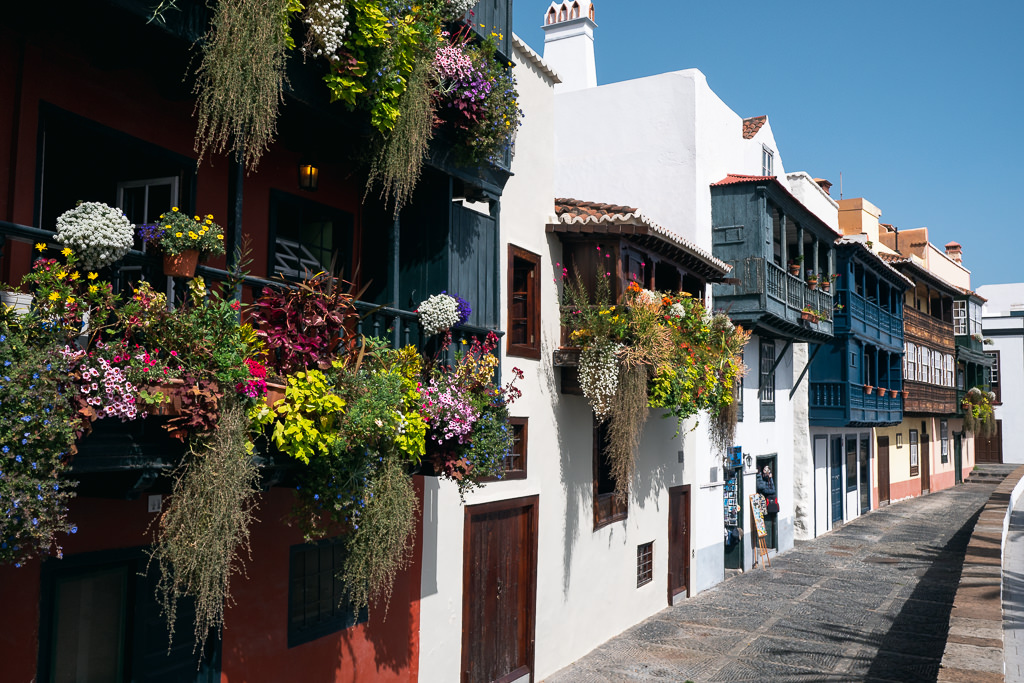
One of La Palma’s star attractions is the Roque de los Muchachos, a rocky mound at the highest point on the island. The drive takes you on a long and twisty mountain road, rewarding you with plenty of beautiful vistas on the way up.
Close to the summit is one of the world’s most important international observatories. Nations from all over Europe manage all manner of telescopes and instruments, with some being owned by countries as far away as Japan. Besides several large optical telescopes, you’ll also find a set of giant honeycomb-like mirrors, designed to detect cosmic gamma rays and looking like a sci-fi contraption.
When I first saw these impressive installations pop up from the mountaintops amid the red rocks with snowy patches, it felt like I was on another planet.
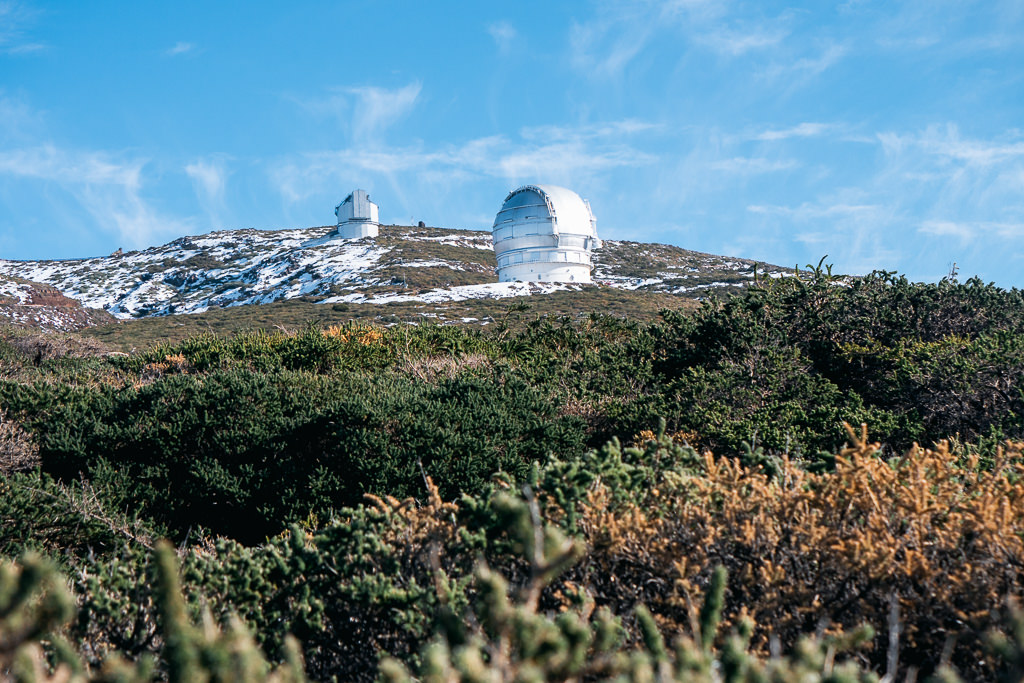
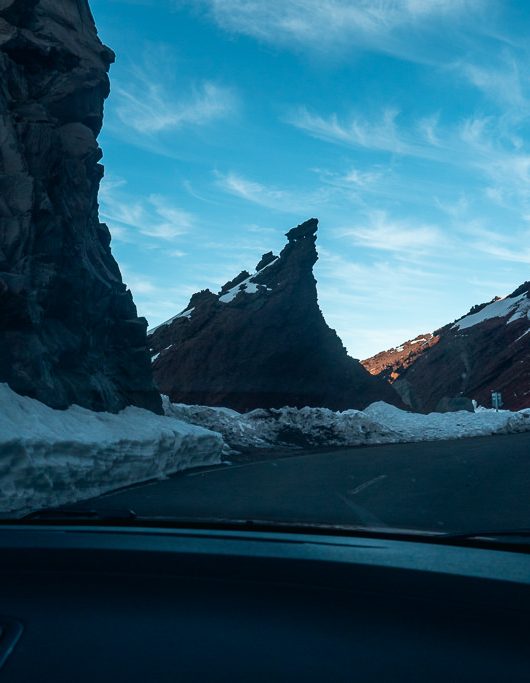
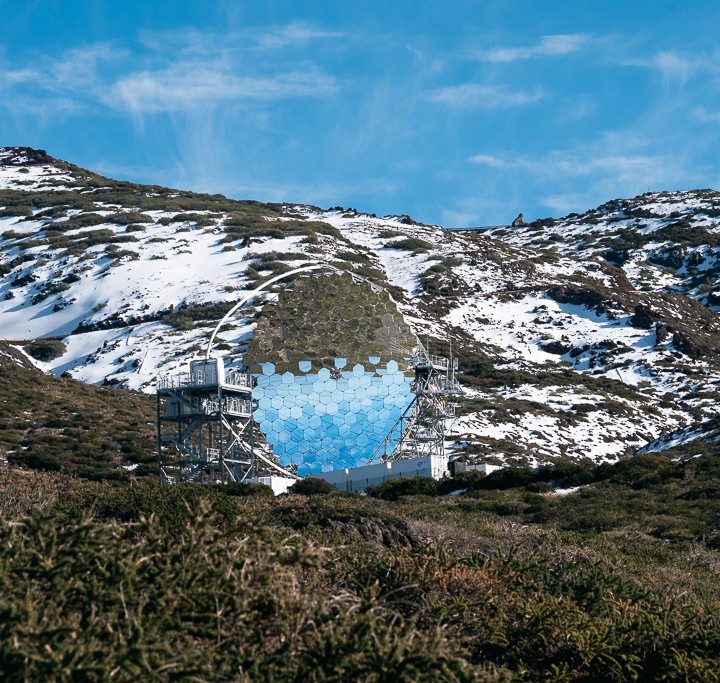
I visited La Palma during the pandemic, which sadly meant that tours of these facilities were suspended, but under normal circumstances, they do offer organised visits during the daytime. (At night, the facilities are restricted to staff-only.) It’s essential to book this well ahead of your trip, as space is limited.
Thanks to the local ‘Law of the Skies’, light pollution is kept to a minimum on La Palma. There are various protected dark zones, streetlights must conform to regulations, and flight paths are rerouted over the ocean to cause minimal interference. Other reasons for the perfect star-gazing conditions include the island’s low humidity, observation points at high altitude, and the smooth Atlantic winds bringing stable air.
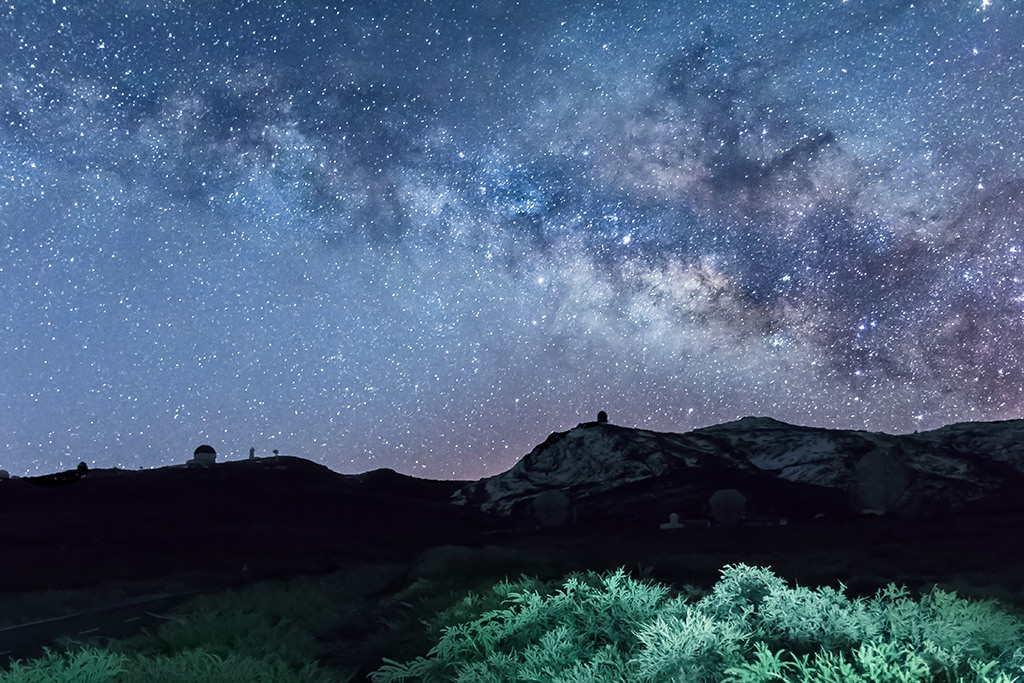
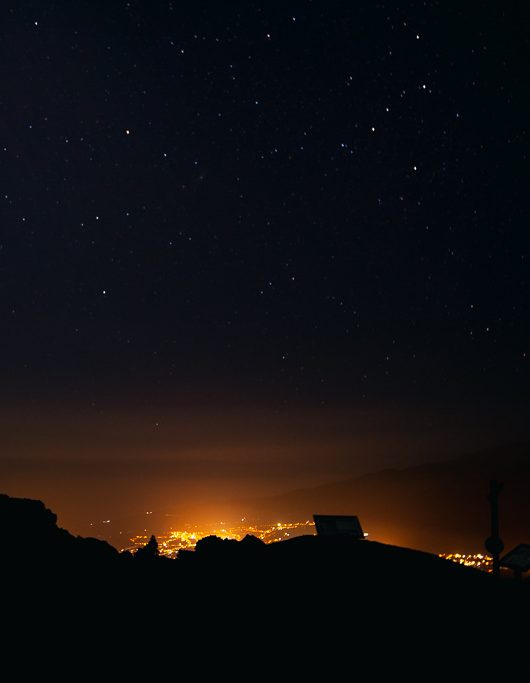
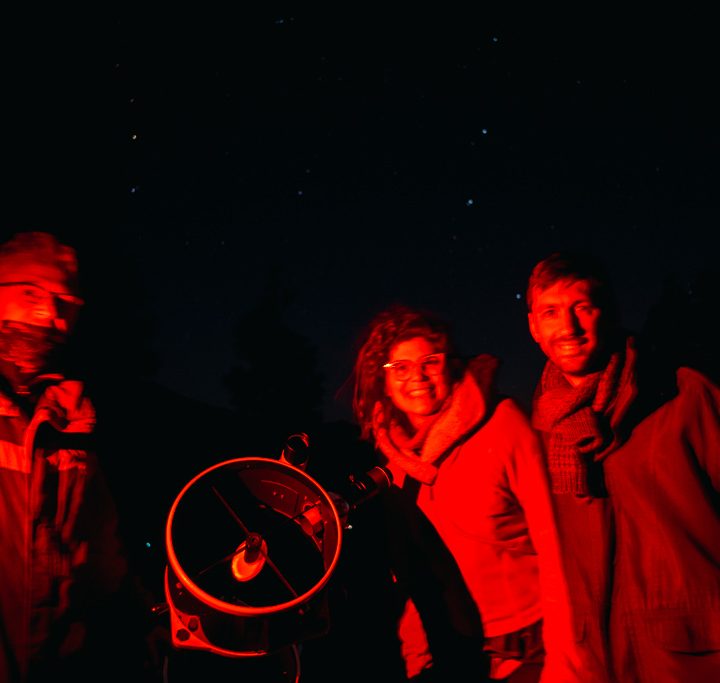
Through Airbnb, I booked a star-gazing experience run by a local astronomer (who also runs an agency, Astro Travels). We met at one of La Palma’s numerous official star-gazing lookout points. There, I had a fantastic tour of the galaxy, peering at the Moon, Mars, distant galaxies, star clusters, and nebulae. I can only compare it to my one other proper star-gazing experience, when I saw Jupiter through a telescope in a remote desert in Colombia a few years back, but I was blown away by the clarity of the stars in La Palma.
If you’re not enticed by astronomy, you may well be attracted to La Palma for its excellent hiking. The island has an entire constellation of trails to choose from.
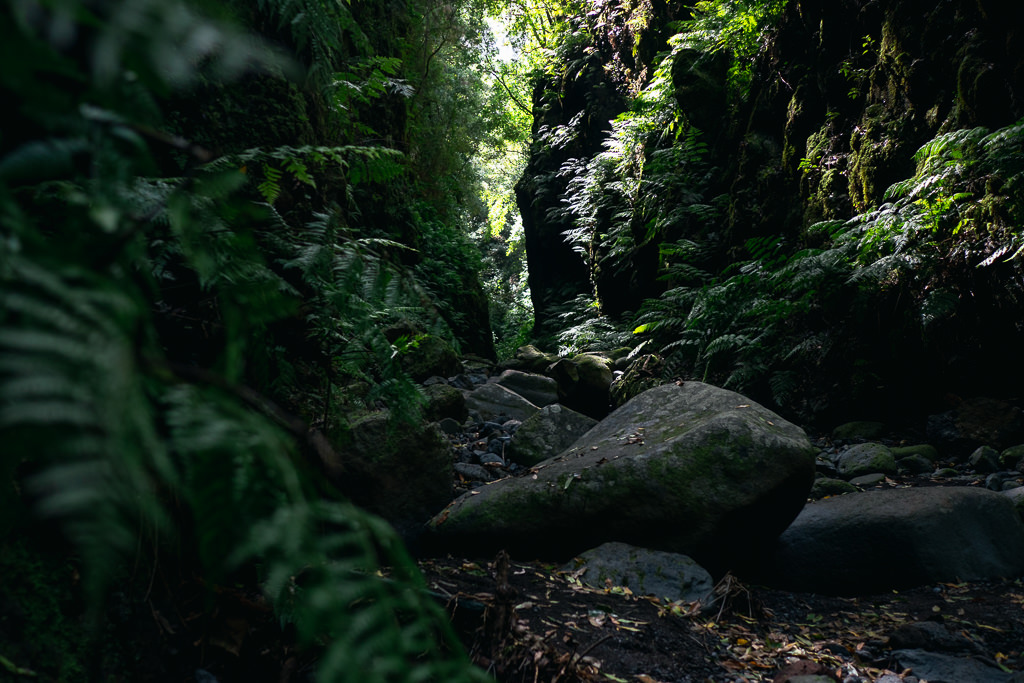
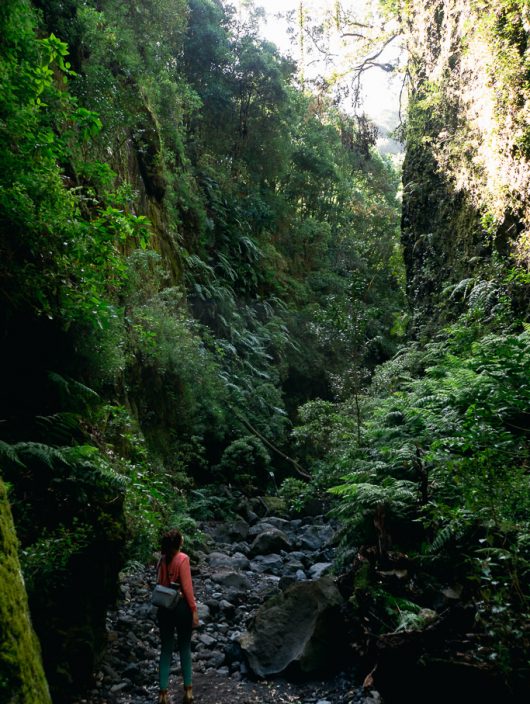
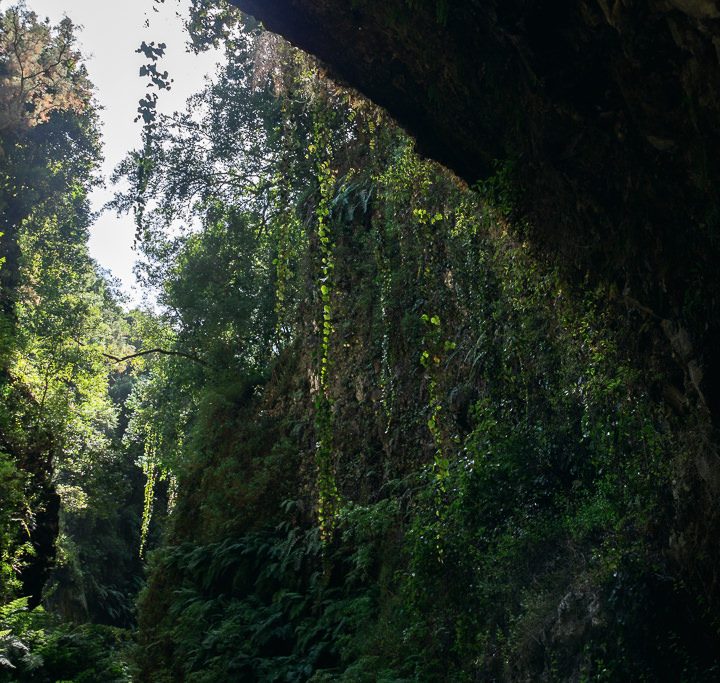
If you only have time for one or two hikes, I would suggest looking at the lush and verdurous northeast corner. The Los Tilos’ trail is especially worthwhile, taking you through a moss-covered cloud forest that has an almost ethereal feel. It’s no coincidence that Netflix selected this area to shoot several scenes of the fantasy show The Witcher.
Between Los Tilos and the Los Muchachos observatory, you shouldn’t miss taking the tiny mountain road of LP-109. The drive is a bit of an adventure, as it runs through jungle-like vegetation and several narrow tunnels in the mountains.
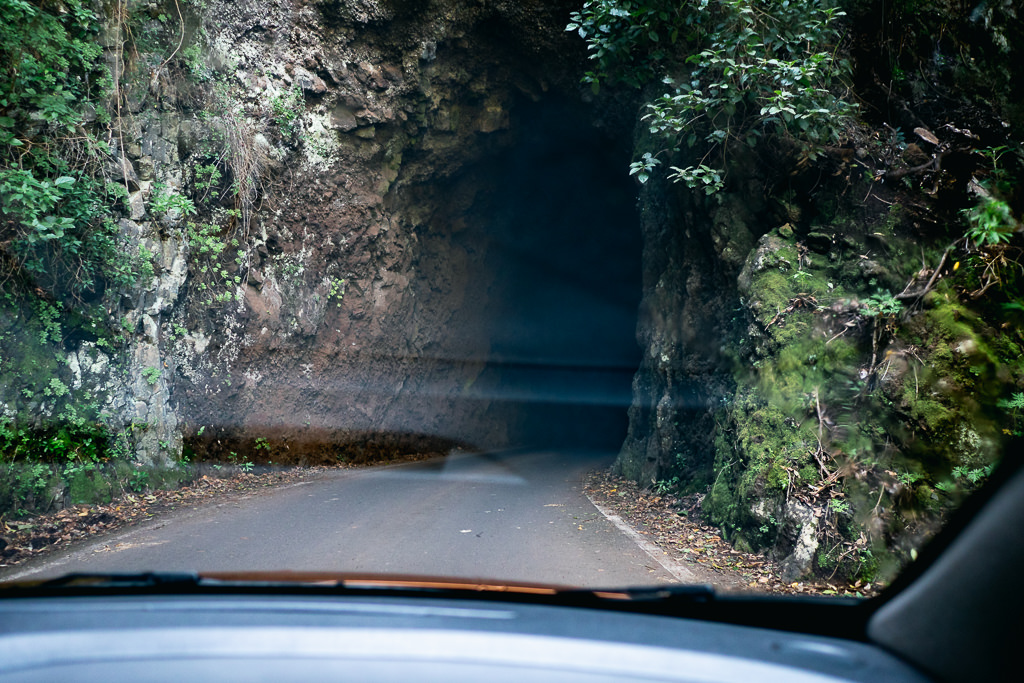
On the west coast, one place not to miss is the Porís de Candelaria. This epic spot is sure to leave an asteroid-like impact on you when you see it. Hidden at the end of a steep coastal road, when you see this seaside hamlet, it will feel like you’ve stumbled upon a secret pirate cove. The cove walls form a perfect circle 50 meters above, and the wild sea bashing into the rocky cliffs below creates effervescent whirlpools splashing over the edges. The place is truly a full 360-degree sensory experience.
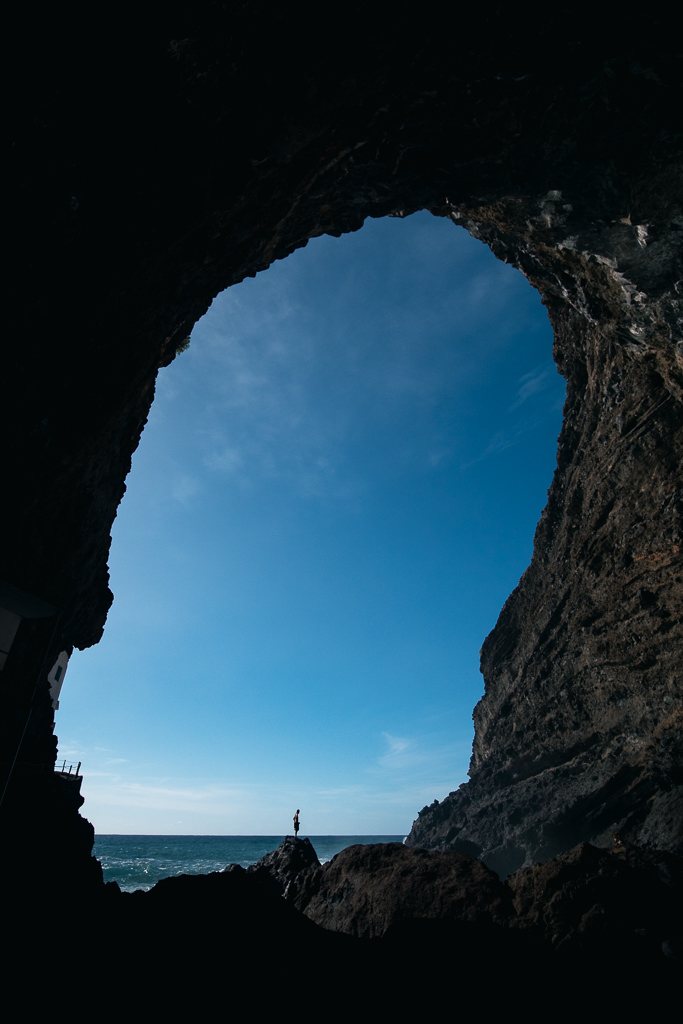
The southern tip of La Palma is barren compared to the greener north, but it’s worth spending a few hours driving around these parts. The sights to see include the Fuencaliente lighthouse, a salt-extraction complex, and the Teneguía volcano, which pokes out from this dusty lunar-like landscape.
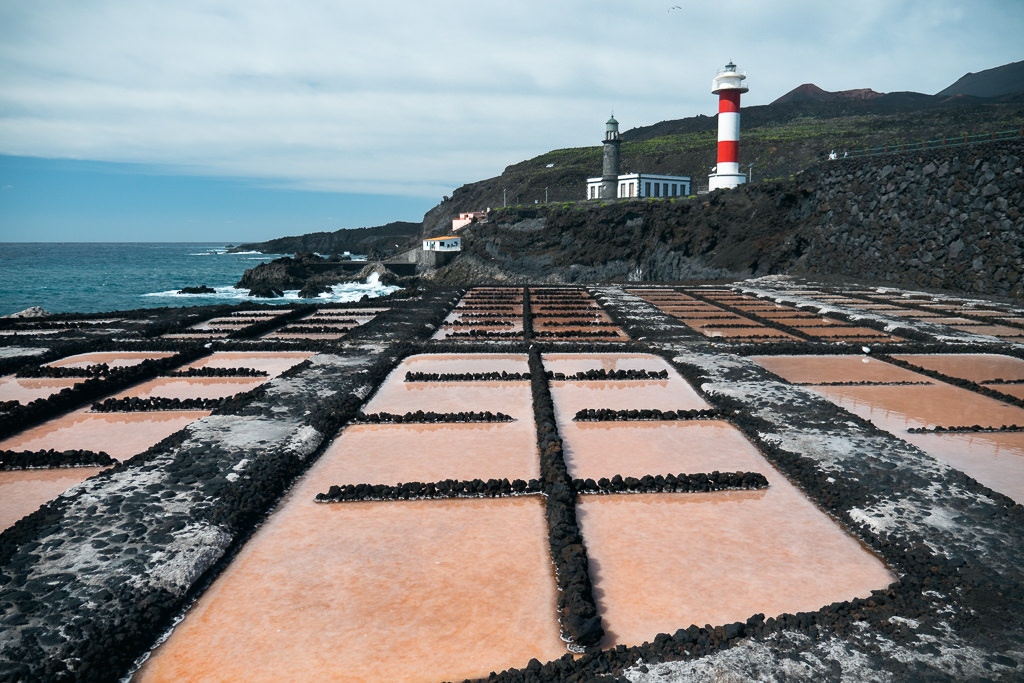
No visit to La Palma would be complete without seeing the central crater, the Caldera de Taburiente. Undoubtedly the best way to really experience this is to hike in or around the crater. Alternatively, you can drive to the Mirador de la Cumbrecita viewpoint (detailed later), situated on the edge of the crater. You will need to grab a parking permit from the visitor’s centre along the LP-3 road; these are free and used only to manage the limited parking spots available at the end of the road.
Hiking on La Palma
After being told that La Palma is one of the best, if not the best, Canary island for hiking, I was not disappointed.
It has numerous hiking trails to choose from, ranging from dwarf-size one-hour walks to a giant multi-day hike over the island’s entire central mountain rim. Here are several hikes I most enjoyed.
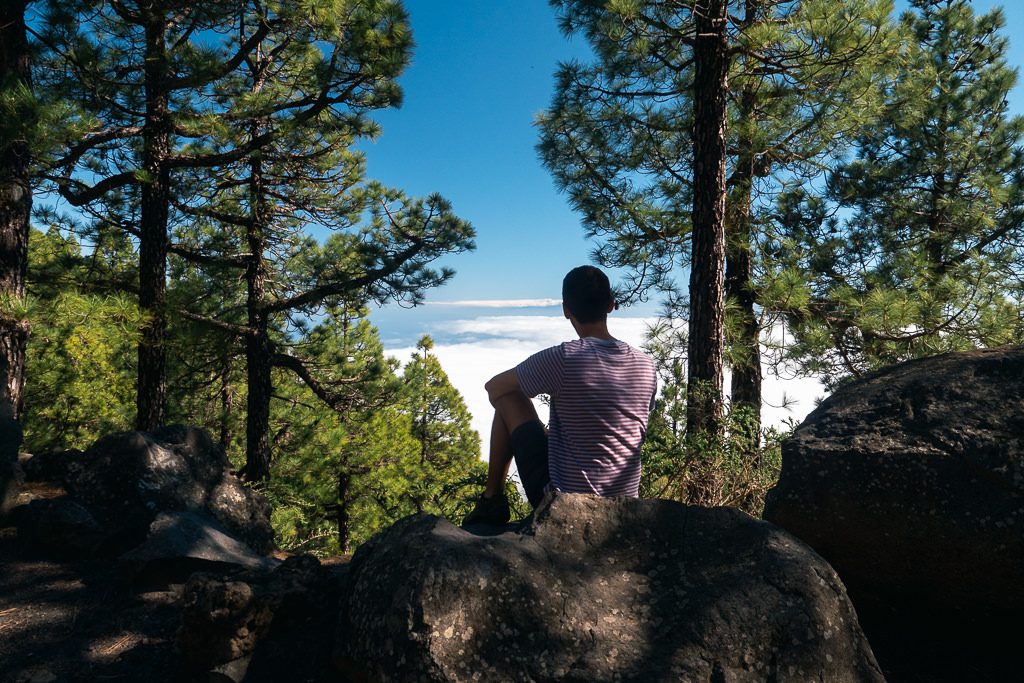
Los Tilos
This delightful hike in the northeastern corner of La Palma takes you through a lush enchanted forest tucked inside a barranco (small canyon). Moisture gets trapped around these parts, causing the forest to be incredibly lush and jungle-like.
The main attraction is a waterfall, though, during my visit, it was almost entirely dry. No matter, because the river’s dry state allowed the opportunity to hike in its path through the canyon while clambering the rocks along the way. Curtains of lianas from hanging rock face above create a unique environment.
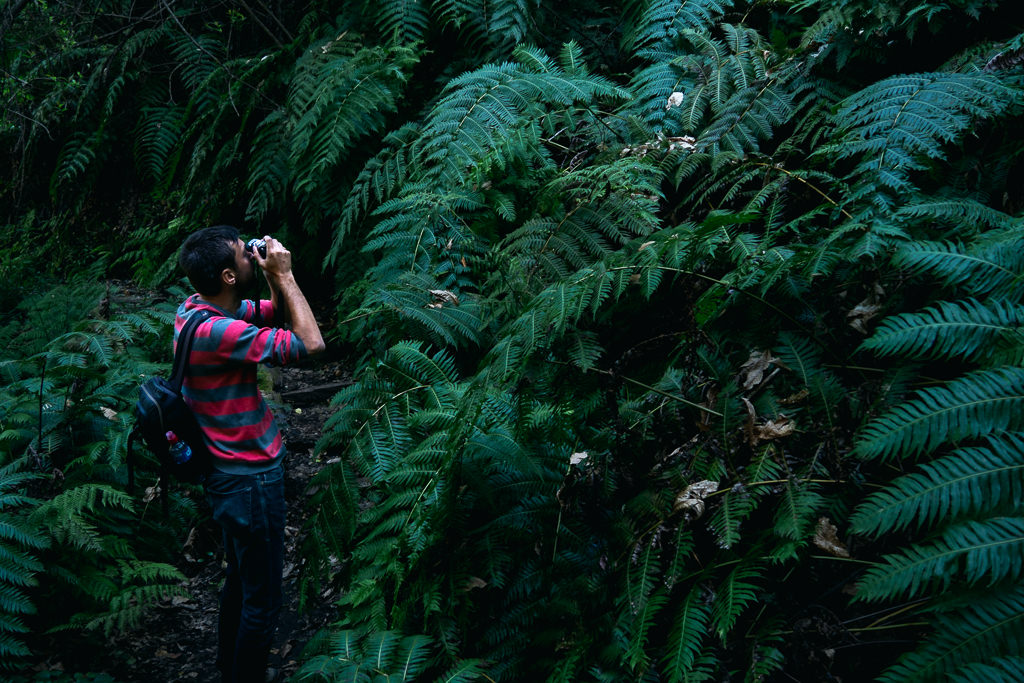
The lush forests around Los Tilos have an almost enchanted feel, which caught some TV producers’ attention. In the Netflix series The Witcher, Los Tilos was the ancient forest Brokilon, home to wood nymphs. Despite only being a casual follower of this show, it was fun to recognise one particular scene framed almost identically to a photo I took inside the canyon.
The main and most accessible trail is marked PR LP7. The advanced Marcos and Cordero (PR LP6) trail takes you through a series of tunnels. Due to landslide risks, it was sadly closed during my visit. Should you attempt this interesting (expert) trail, please be aware that flashlights and helmets are recommended, and you should be in an adventurous mood. Some tour operators offer guided treks which include the necessary equipment.
El Cubo de La Galga
A short drive from Los Tilos is another fantastic and gentle hike through a barranco, marked as PR LP 5.1. It has the advantage of a circular rather than linear route, following the path of a small creek, before going up towards a nice viewpoint. The cool air and the sound of the gently rippling water make this a meditative walk. This hike also gives you the chance to admire the island’s laurel forests, brimming with ferns and moss.
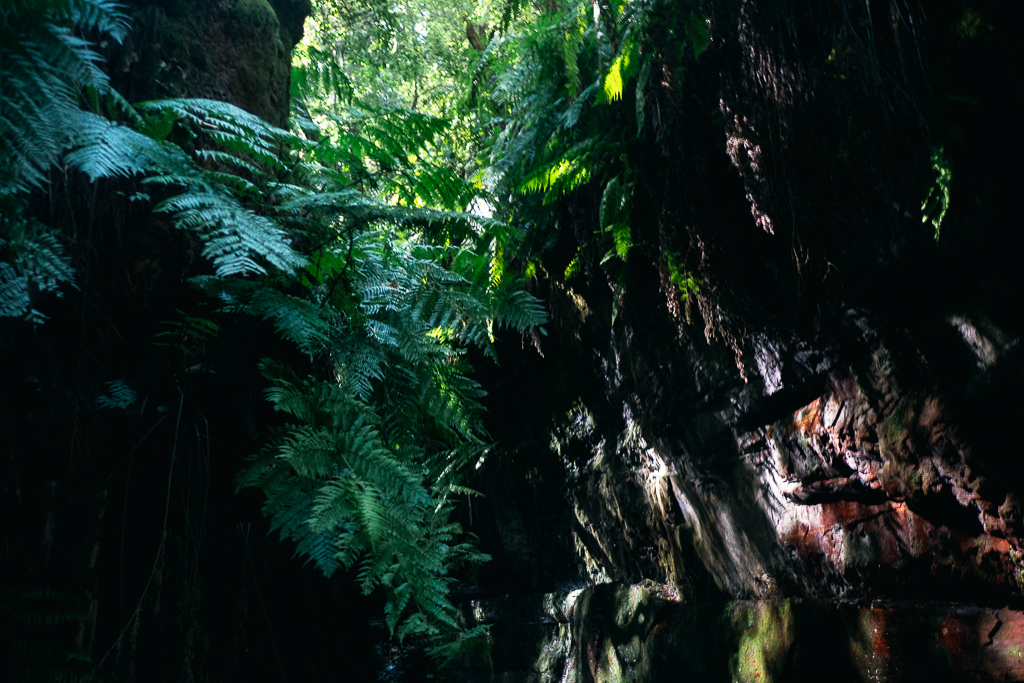
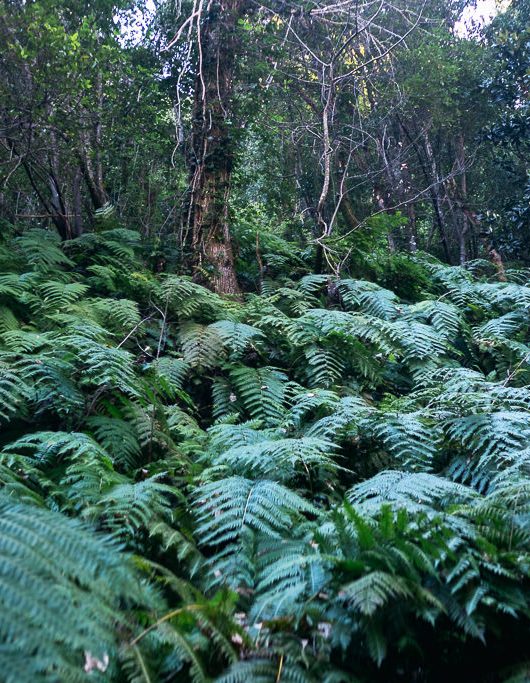
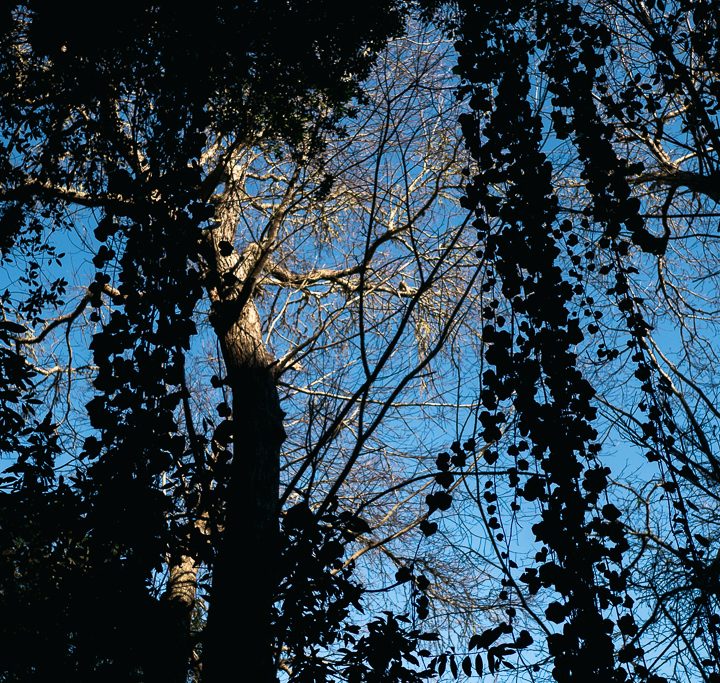
The first linear section of this trail through the village is optional and can be skipped by parking your car here and starting at the circular section through the forest.
Pico de La Nieve
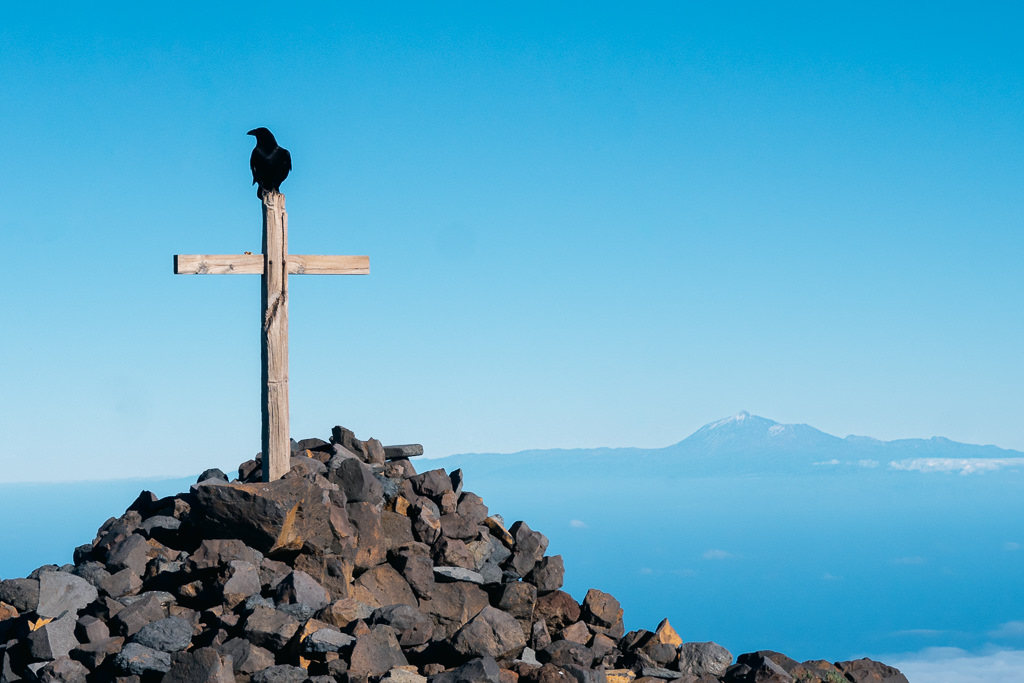
This 90-minute or so linear hike (look for trail PR LP3) takes you through pine forests to a mountaintop viewpoint above the clouds. From Pico de la Nieve, you can enjoy gobsmacking views of the island’s central crater, with some of the giant telescopes from the astronomical centre visible in the distance.
I did this hike on a grey day with low-hanging clouds, which turned out to be a real gift; above the clouds, I was in heaven. Seeing the undulating cloud carpets below, with several mountain peaks poking out like tiny floating islands, made for a dream-like vista.
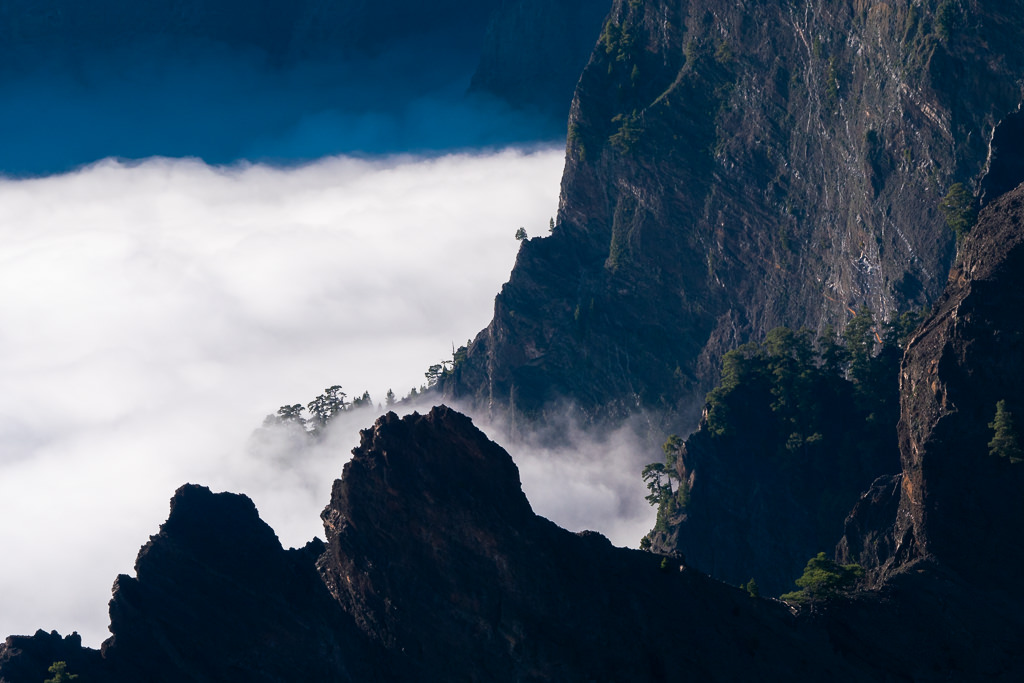
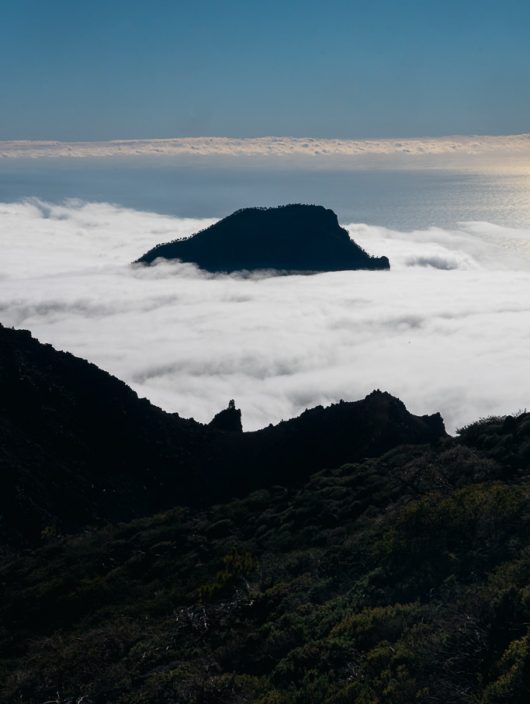
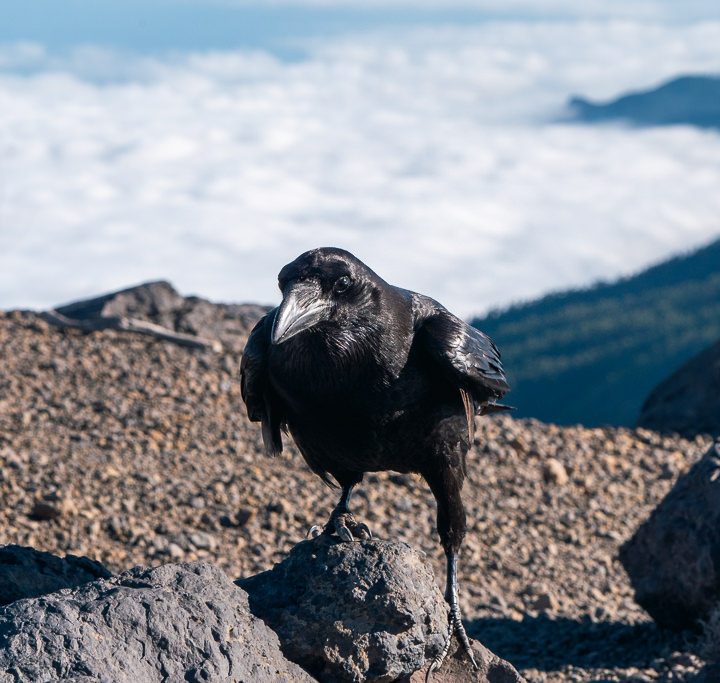
The wooden cross at the peak seems to be a waypoint for ravens that live around these parts. One of them was incredibly willing to pose for a picture, though it suddenly appeared much more threatening, seemingly sharpening its beak on a metal sign while giving me a death stare. Perhaps it had been expecting some peanuts. I’m sorry, raven!
The path of dreams
This 1-hour or so there-and-back walk on the northeastern coast does not have an official designation, but I read about it on a Spanish blog and thought it was delightful. It starts just past Las Tricias, near the bus stop of Lomada Grande.
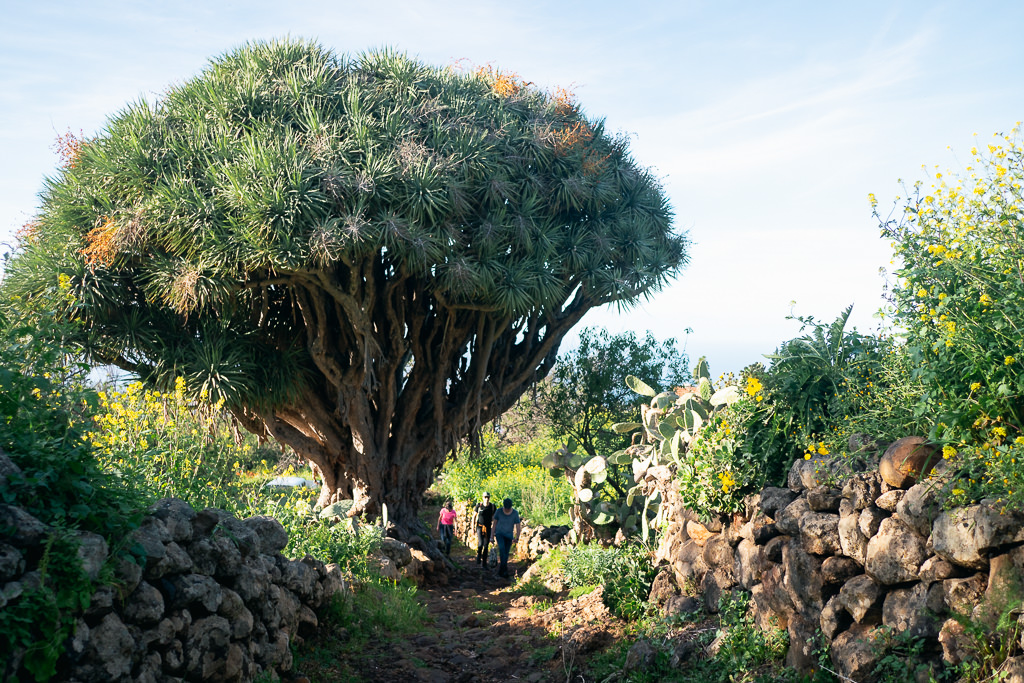
You’ll pass many houses with cute cactus gardens, big dragon trees, several cave houses, and a cafe selling organic and aloe vera products. This trail makes for a fun diversion if you are already in this corner of the island.
National Park of the Caldera
Due to a code-yellow storm, this trail was sadly closed when I visited La Palma, as there is a landslide risk in some parts after heavy rainfall. Only once the route has been checked by rangers do they consider reopening. I will still mention this hike in the interest of completion, as I was gutted that I couldn’t do it.
The PR LP13 hike is an arduous one, covering a total distance of about 27 km (17 miles). It is mostly a circular route inside the massive crater at the island’s centre, stopping at the Cascada de Los Colores. At this waterfall, the iron-rich waters have created various shades of yellow and red rocks.
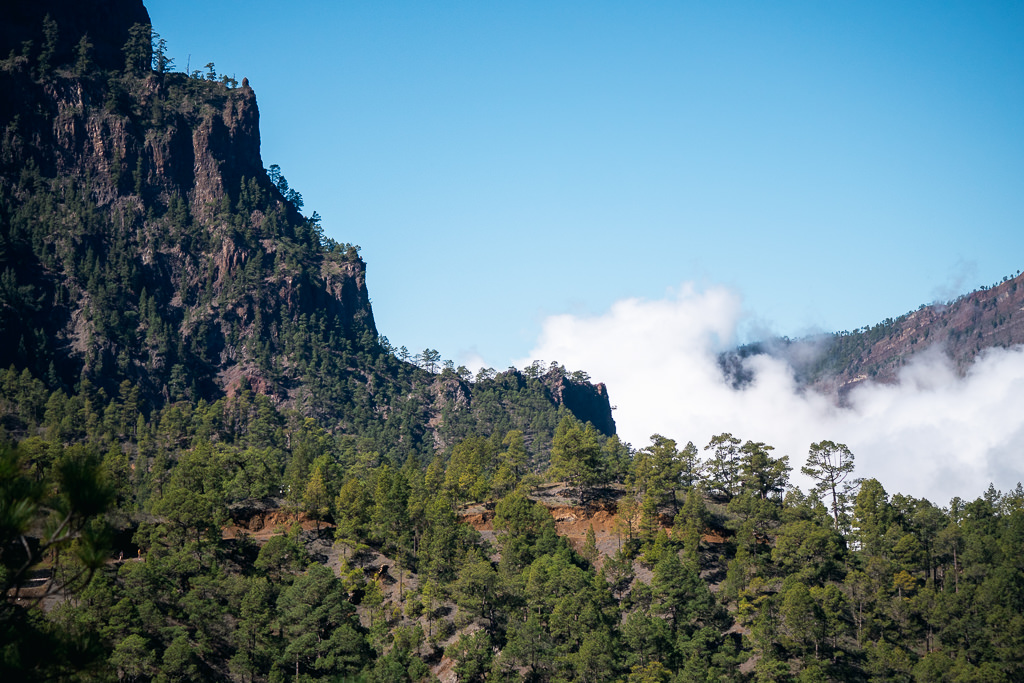
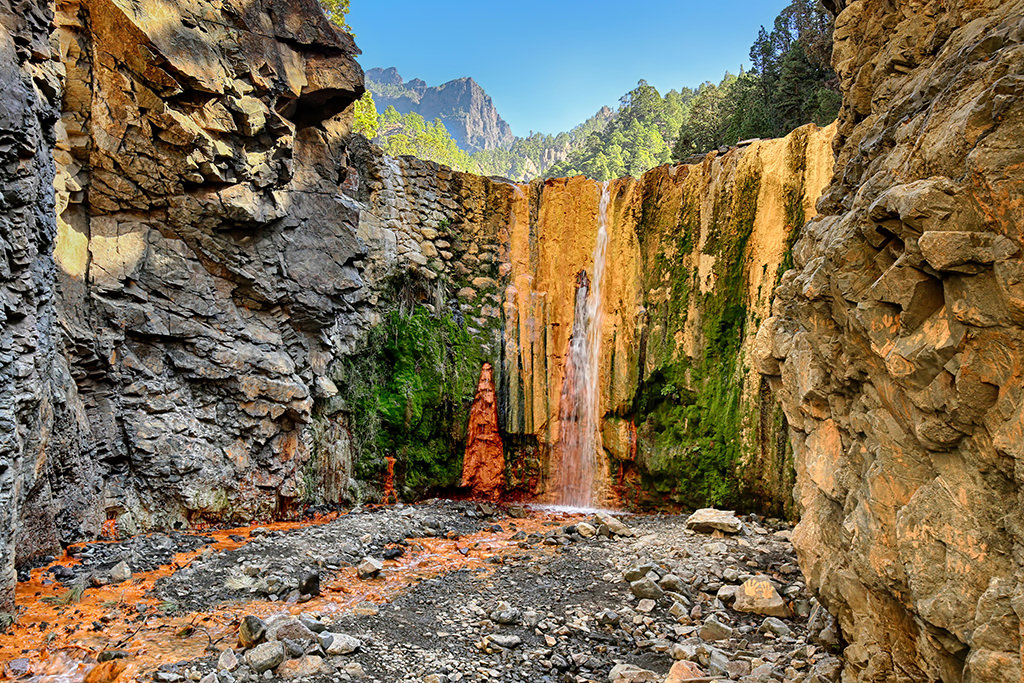
The full trail would generally take about nine hours, but there are ways to reduce the distance and make it a bit less demanding. You can drive up to the parking lot, marked Estacionamiento de la Caldera de Taburiente, which will cut about 5 km. From there, you can further reduce by taking a taxi up to the Mirador de Los Brecitos, cutting out a stiff hike up to the trail’s highest peak.
Only specifically licensed minivan taxis may operate here in the mornings between 8am and 12pm. One ride costs about 50 Euro, so you may want to share a ride; park rangers told me your best bet to find other hikers to share the ride is between 9.30 and 11.00. Skipping ahead by taxi should reduce the hike to a more manageable six hours.
Should the trail be closed during your visit, then the Mirador de la Cumbrecita can be your consolation prize. It may not be quite as epic, but it will allow you to view the crater from an alternate angle.
Mirador de la Cumbrecita
The Mirador de la Cumbrecita is an observation deck overlooking the central crater of La Palma. You can drive up just for the view (be sure to get a parking ticket from the visitor’s centre) or you can follow a small hike that loops around passing two viewpoints, which should take no more than an hour.
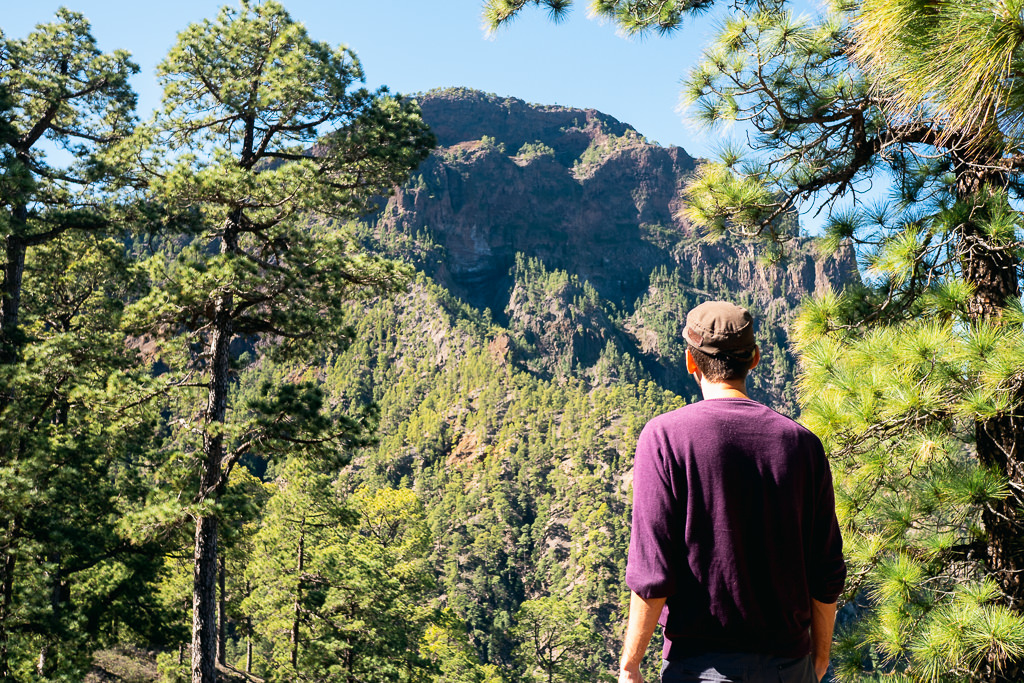
The PR LP 13.1 trail also leaves from Mirador de la Cumbrecita and goes down into the crater, an alternative to the hike mentioned in the previous paragraph. However, the difficulty is rated as ‘extreme’ and likely involves camping inside the park.
Trekking La Palma
If you prefer multi-day trekking, La Palma is certainly a good place. The one big trail to tackle is the GR-131, which runs all the way longitudinally through the middle of the island, following more or less the mountain rim and passing several volcanoes as well as the central Taburiente crater.
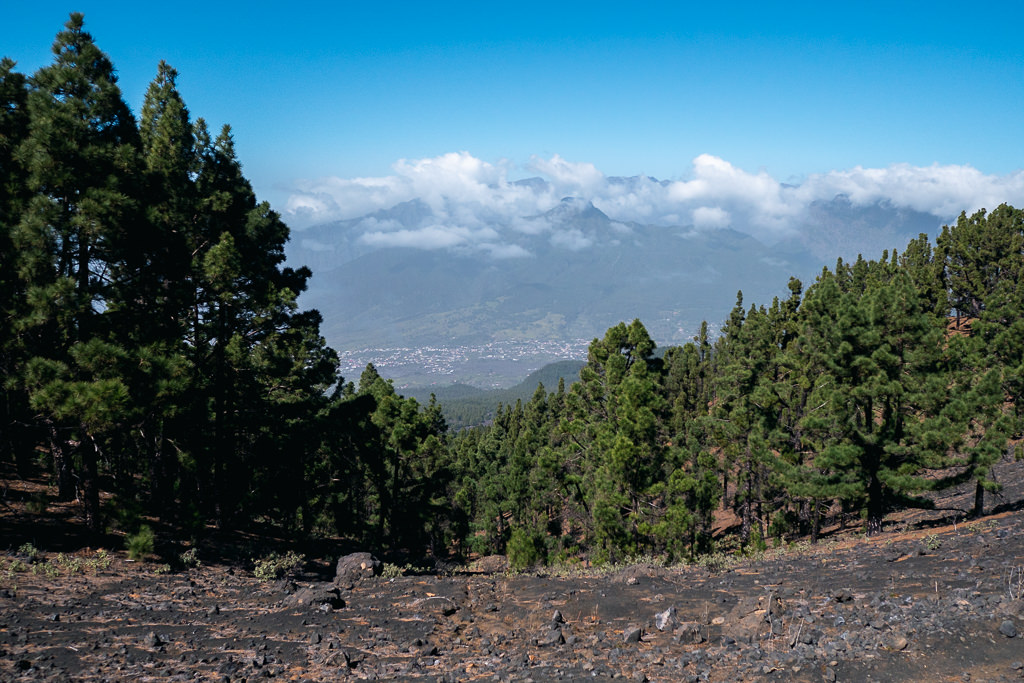
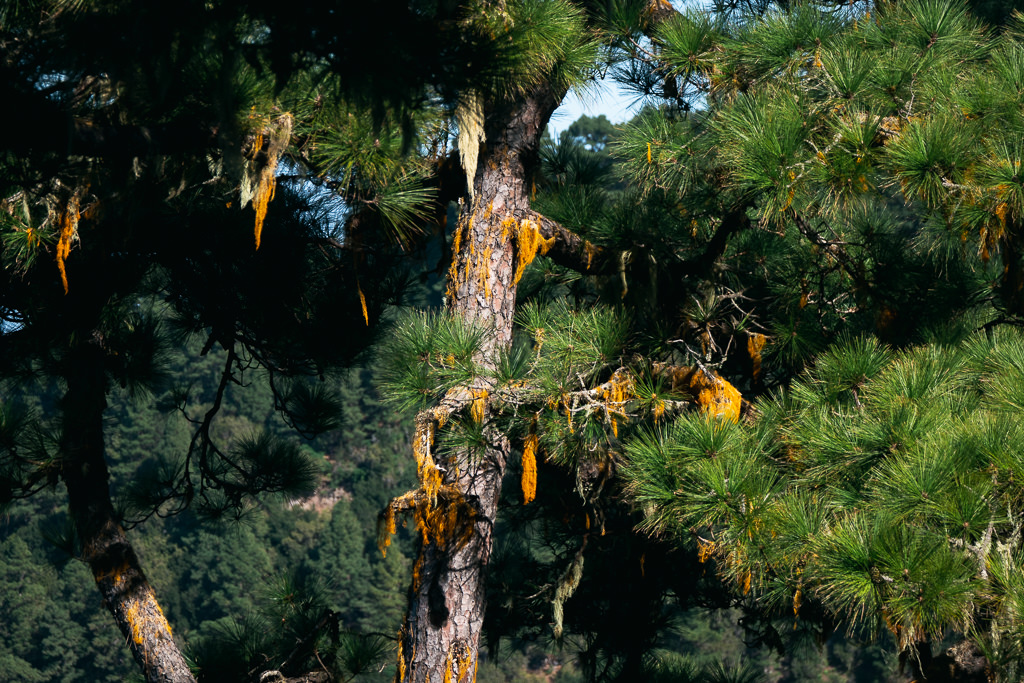
I walked a few sections of the GR-131 that overlapped with the day-hike, which gave me a glimpse of some features of this epic three-day traverse. It mostly runs through the higher altitude sections of La Palma, where there is less jungle but more sparse pine forests and rocky landscapes. What makes GR-131 especially attractive is the panoramic views you’ll experience pretty much constantly as you follow the island’s crest.
This trek goes through Cumbre Vieja Natural Park for a day, after which you can camp at the refuge of El Pilar, where there is drinking water, showers, toilets, and BBQ grills. On day two, you will reach the peaks of Los Muchachos, the international observatories’ base. Day three takes you back to the coast on the northern side of La Palma.
Where to stay
I found that all corners of the island can make for suitable bases for exploration. Unlike Tenerife or Gran Canaria, there is no large-scale tourism development whatsoever, so if this is something you prefer to avoid, you will be fine anywhere on La Palma.
The only part that I would rate as merely okay is Los Llanos. This municipality forms the commercial heart of the island, with a greater population density and more traffic. It’s not without its qualities; in fact, I loved stopping at the main square of Los Llanos for a coffee under a roof of giant Indian laurel trees, but I do think the countryside offers much nicer places to find some accommodation.
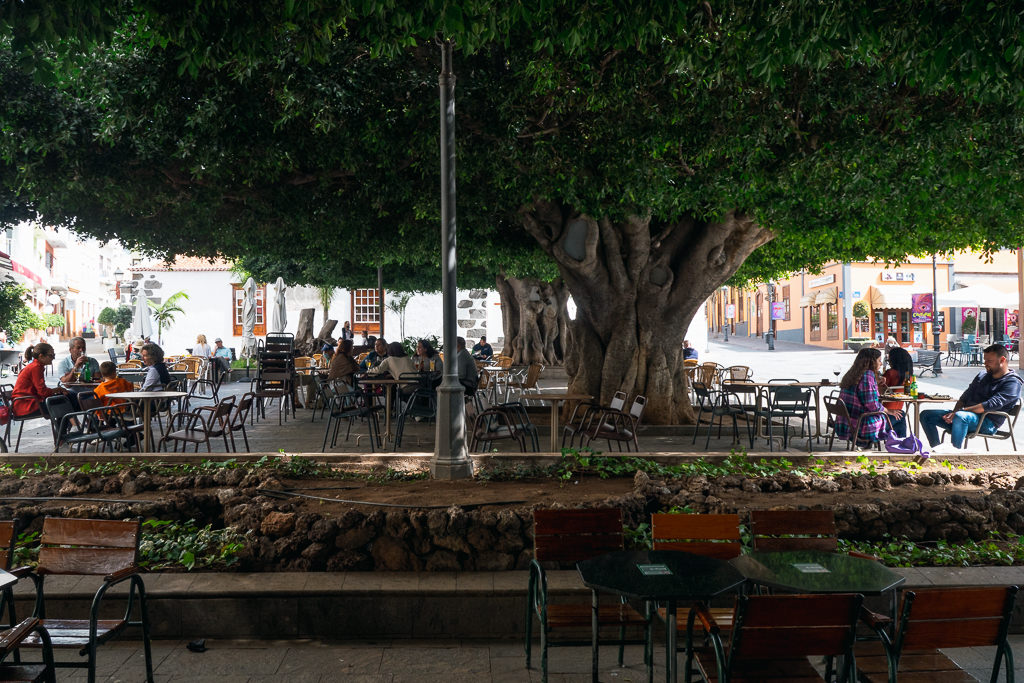
The capital city, Santa Cruz de La Palma, is a real gem. It has a cobblestoney old world charm and is blessed with a lovely beach promenade.
You’ll experience the same in all the villages directly south of the capital, such as Villa de Mazo, where I stayed for part of my trip. Even though the airport is situated here, you hardly ever hear any planes. This area is highly accessible whether you arrive by boat or plane and is a perfect location to use as a base.
Even though Santa Cruz de la Palma is officially the capital, it’s really just a small town, whereas Los Llanos developed into the island’s largest settlement.
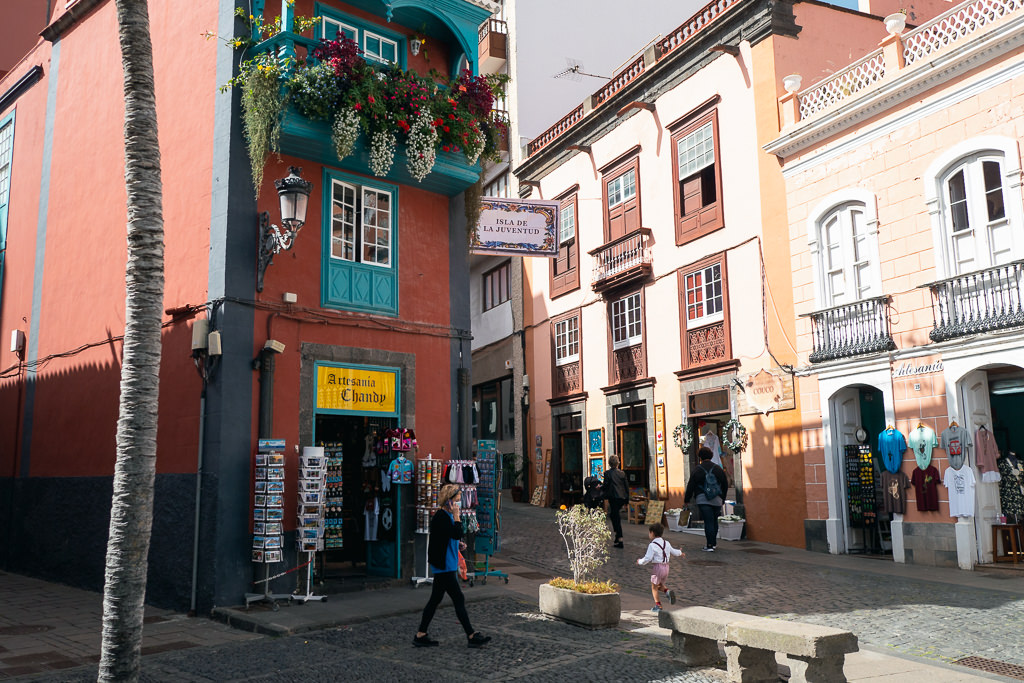
If your preference is somewhere more remote, I have to say the north and northwest are very appealing. Small towns like Las Tricias and Puntagorda will undoubtedly tick all the boxes if you enjoy being in a far off corner yet close to some of La Palma’s hiking trails.
Puerto Naos on the west coast is the closest thing La Palma has to a resort; if you want to be assured of convenient beach access throughout your stay, this will be a good choice.
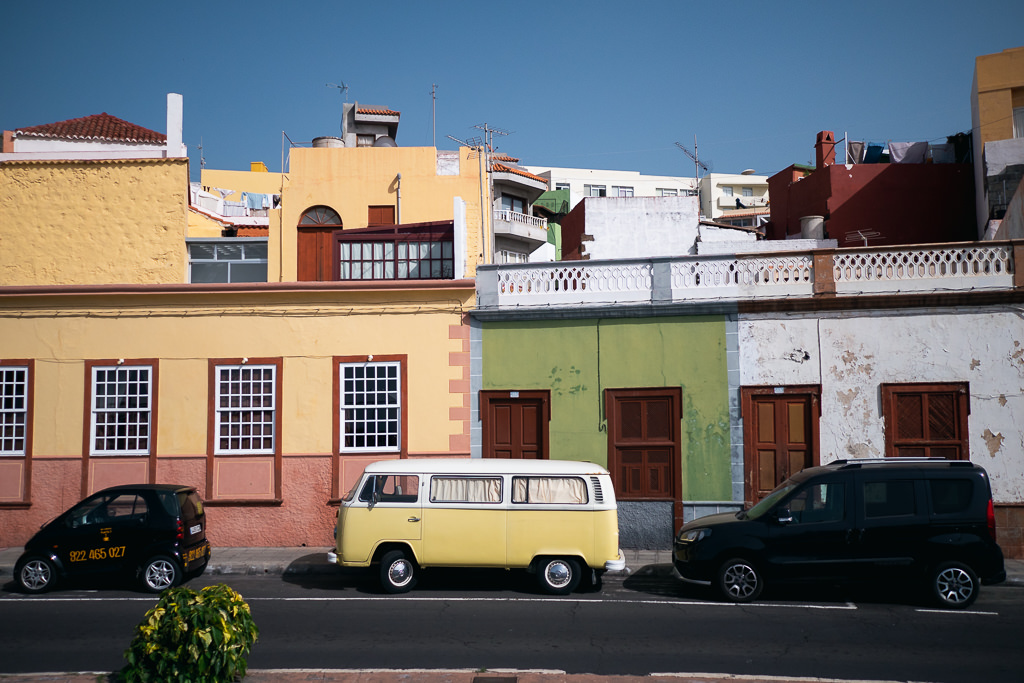
There are plenty of hotels on the island, though I had my mind set on staying in a country house. While there are many available, I couldn’t always easily find options everywhere. I’d learn of a cute town to visit but only find two or three country houses or holiday apartments on major sites like Airbnb.
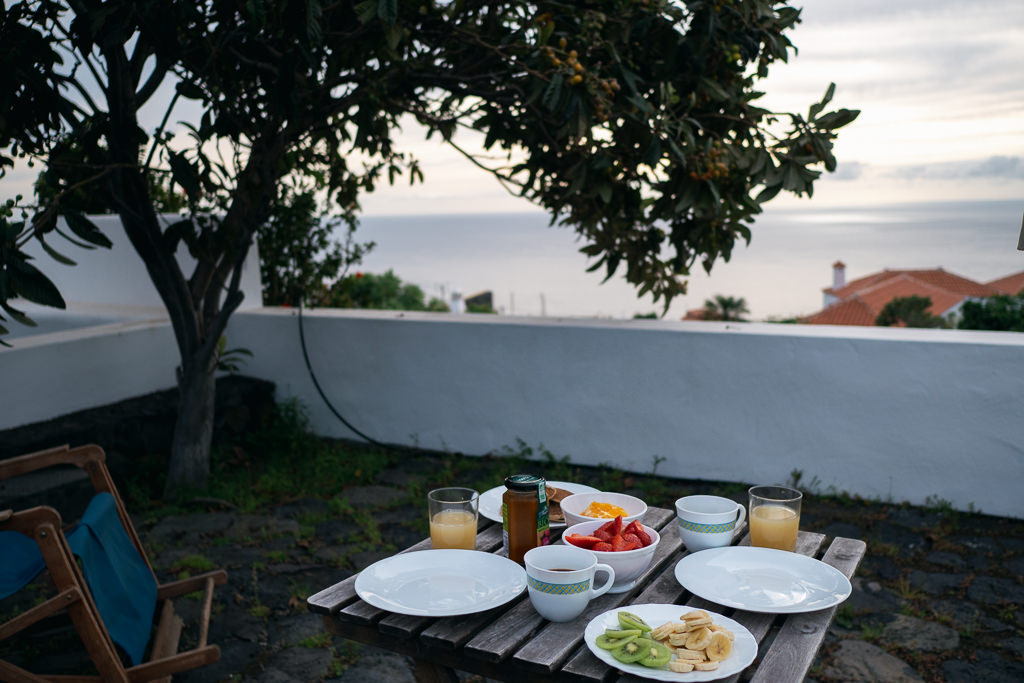
Additional research may help you find more local accommodation. The organisation Turismo Rural Isla Bonita represents a large stock of characterful holiday homes and even gave me some personal assistance in finding a place that matched my criteria.
If you’re coming to La Palma as a backpacker, you will have three traveller hostels on the island to choose from.
One is a budget pension in the lovely southern town of Los Canarios, close to the trailhead for the GR-131 route.
The well-rated Vagamundo backpacker hostel in Los Llanos is ideally situated for a trek into the Caldera de Taburiente National Park.
La Casa Encantada is another good option, situated in El Paso, a cute centrally located mountain town not far from Los Llanos. It has a rooftop terrace and exudes a true ‘traveller hostel’ atmosphere.
How to get around
The most practical way to get around La Palma is with your own rental car. You can compare rental car prices on DiscoverCars.com.
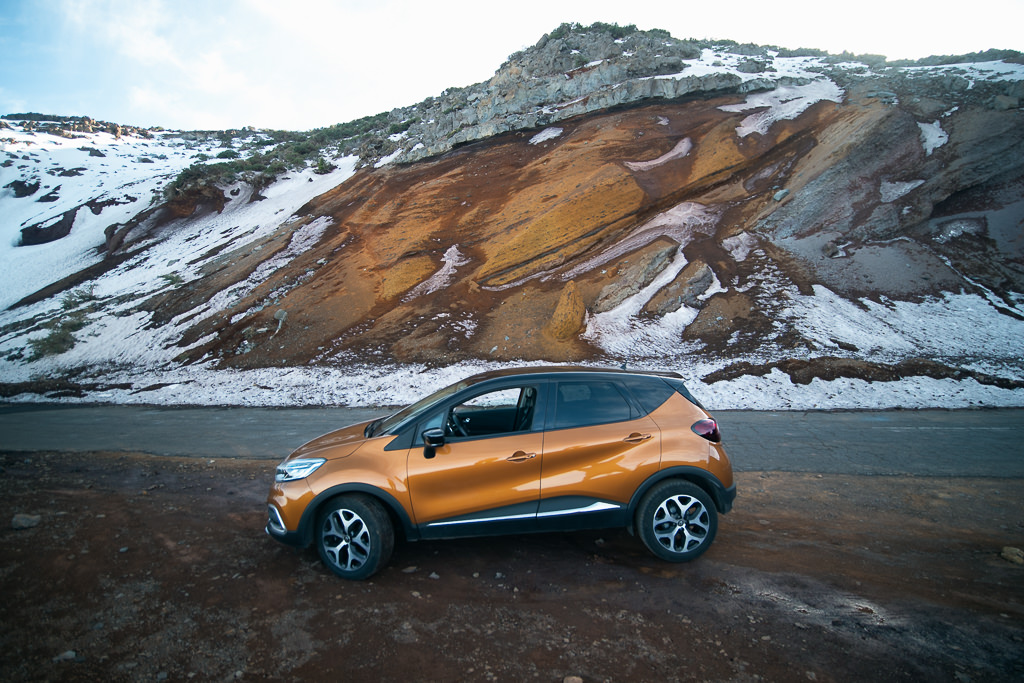
The roads are pretty easy-going with light traffic for the most part, though since there are almost no motorways, it can sometimes take a while to get to some attractions. The zig-zaggy road to Los Muchachos, in particular, can border on the tedious (it’s about one hour from Santa Cruz to the top and another hour to drive back in a circle). That said, the vistas make it very well worth every minute.
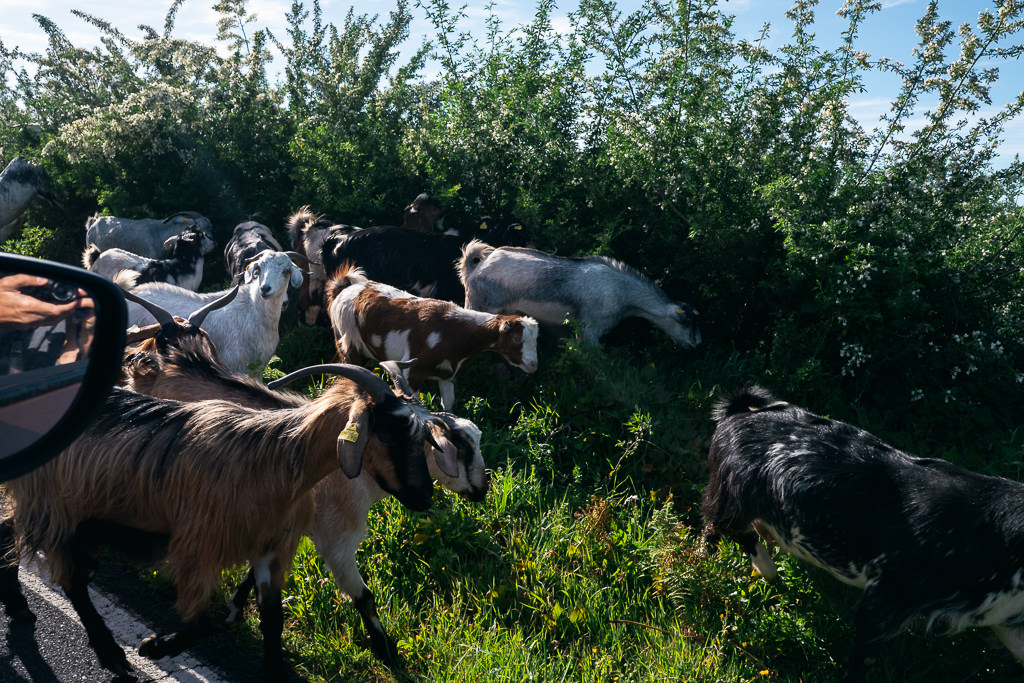
Keep an eye out when driving the mountain roads around dusk, as bunny rabbits and quails will pop out seemingly from everywhere — and it would be very sad to hit them! Due to the low light pollution and lack of noise, quite a few animals hang out close to the country roads during the quiet hours.
The bus network on La Palma is rather good, with the guaguas (the local name for buses) stopping in most major spots. The main routes and timetables can be found on the official site.
Some links may be affiliate links, meaning I may earn commission from products or services I recommend. For more, see site policies.
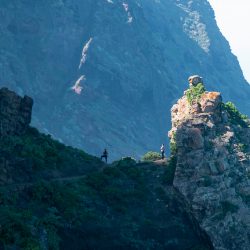
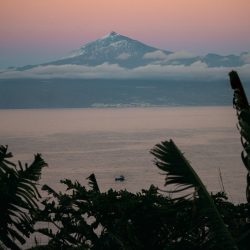




0 comments
Leave a comment
Your email address will not be published. Comments are manually moderated.